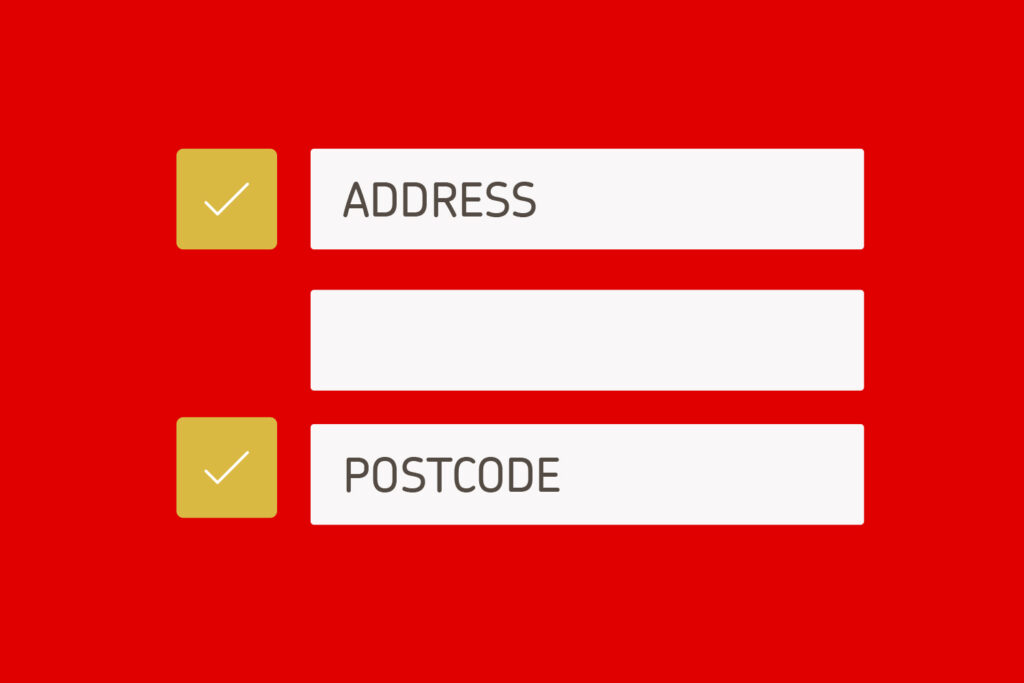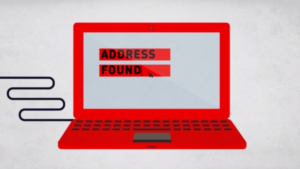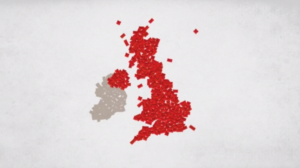In my job, I talk to a lot of people about addressing and, in particular, the importance of Postcodes. Now, they may just be a set of letters and numbers to some people, but Postcodes play a really important role in our day-to-day lives and their value should not be understated.
How many times a week are you asked for your Postcode? I’m sure you’ll be familiar with, ‘can I take your Postcode and the first line of your address please’. Whether you’re calling to get a quote for travel insurance, booking your car in for an MOT or arranging for your new sofa to be delivered, the questions remain the same.
Similarly, how many times a week do you write or type your Postcode? If you shop online, for example, you’ll frequently be asked to enter your Postcode and select your property number from a dropdown list. The retailer is making it as quick and easy as possible for you to place your order for a number of reasons; they want to collect your correct address details in order to ensure it’s an address they can deliver to and is correctly formatted before they input it into their existing systems, this is particularly important when it comes to contacting you in future. By using address information in this way the retailer is also increasing the likelihood that you’ll complete your order rather than abandon your basket. It’s a win-win situation!
The Postcode Address File
We all know that Postcodes have been around for ages, created over fifty years ago primarily for routing letters, but what I find amazing is how useful they are proving to be in the digital age. The really encouraging thing is that use of Postcode information is continuing to grow. Around 40,000 UK organisations license Royal Mail’s Postcode Address File, PAF for short, and in doing so have access to over 29 million UK addresses and all UK Postcodes.
Despite such strong awareness of Postcodes and their continued importance in everyday life, I’m surprised that there are not more organisations utilising the information. Some organisations simply don’t recognise the need or the benefits; however, I suspect there are a number of misconceptions about PAF that prevents even greater use. The most common misconceptions are that it is complicated to license, expensive and, depending on the perspective, contains too much or too little information.
Each of these statements are not true. There are in fact a range of flexible licensing options designed to suit the way organisations use the data, and these options are very affordable. For example, an individual user can access PAF on an unlimited basis from only £70 a year, that’s about 19p a day! That’s not all, licensed public sector organisations and small, registered charities can access for free. Similarly, as part of our commitment to driving innovation and widening use of addressing information, we also provide micro-businesses with free access to PAF.
PAF includes address and Postcode information for the Full UK – England, Wales, Scotland, Northern Ireland, the Channel Islands and the Isle of Man – it’s entirely up to the customer whether they want the ability to access all the address records or just pay for those in the areas they serve.
It’s also worth remembering too that the information in PAF refers to UK delivery points – a delivery point is typically a letterbox where a piece of mail can be delivered. If a building doesn’t have a delivery point like a barn or electricity sub-station, it is not included in PAF.
PAF only contains information that supports the delivery of mail and for this reason it doesn’t contain geo-locational codes or County names. County names used to be included but were removed a number of years ago. I know some organisations still like to refer to County names so we continue to provide access to the information but in our Alias database.
A conversation with customers
I always enjoy meeting customers too and hearing about how they’re using address and Postcode information to develop the services they offer their customers in turn.
I have spoken to Financial Services providers who have explained to me how, for example, they use the ‘Household Count’ within PAF to improve their service offering. It’s simple really, when they recognise that they’re sending a credit card to an address with more than one dwelling behind the main door, they use a Special Delivery or signed for service. In this way, they’re increasing the likelihood that the new credit card gets to the intended recipient rather than sitting uncollected on a doormat in a shared entrance. I’m continually impressed by the ingenuity of organisations and how they use our data in such creative ways.
The important role of Solutions Providers
As much as I enjoy meeting customers, there is obviously a limit to how many people I can speak to about Postcodes and about PAF. Luckily, there is a dynamic community of independent Solutions Providers having conversations with customer organisations across the UK every day. They are vital to promoting the importance of accurate addressing and the use of PAF. I know first-hand that they’re doing a fantastic job in spreading the word, selling the benefits and making organisations stop and think about how PAF could help them. PAF Solutions Providers play a central role in developing new solutions to meet every changing customer requirements. I greatly appreciate their efforts and hard work.
If you are reading this and are encouraged to find out more about PAF and how it could help you, I’d strongly suggest taking a look at our short PAF video and reading some short case studies on our website. Here you can also connect with Solutions Providers or, if you fancy trying your arm at developing, download sample data and have a go yourself. Alternatively, if you have any questions about PAF simply get in touch and we’ll be happy to help.
Thanks for reading.
Steve Rooney
Head of Royal Mail’s Address Management Unit






